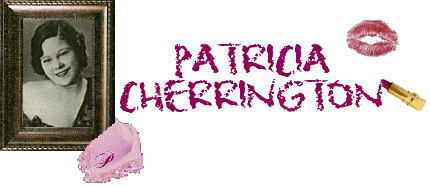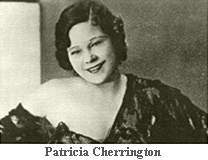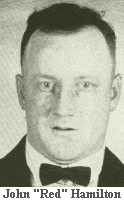
Patricia Cherrington

 She was ambitious, energetic, bright and creative. She loved poetry and music, and had once entertained the dream of attending college. Born on September 26, 1903 in Arkansas, to parents William Long and Goldie Jacquas, she struggled to raise a daughter, born when she was a teenager in Tulsa. To support herself and her little girl, she worked in Chicago nightclubs as a chorus line dancer. During the 1920s, she commanded a high salary for dancing in the speakeasies of Prohibition-Era Chicago.
She was ambitious, energetic, bright and creative. She loved poetry and music, and had once entertained the dream of attending college. Born on September 26, 1903 in Arkansas, to parents William Long and Goldie Jacquas, she struggled to raise a daughter, born when she was a teenager in Tulsa. To support herself and her little girl, she worked in Chicago nightclubs as a chorus line dancer. During the 1920s, she commanded a high salary for dancing in the speakeasies of Prohibition-Era Chicago.
Fate stepped in as she turned 30. She began to get sick with a malfunctioning gall bladder. Her physical ailments changed her life forever. It directed her crash-course toward the only men in her circle who had money to pay for doctors. She dated Dillinger-gangster Harry Copeland before his arrest.
After that, she set her sights on Dillinger's close friend, John "Red" Hamilton. She nursed Hamilton back to health after his wounding in the East Chicago, Indiana bank robbery of January 15, 1934, where he recuperated in a residential house in Chicago.
Patricia loved her men - all of them. While writing to Art Cherrington, her husband, in Leavenworth, she also wrote to Welton Spark, her husband's co-defendant. She visited Harry Copeland in the Indiana State Prison at Michigan City, on her frequent trips away from John Hamilton.

During one of these periods of separation from Hamilton, she learned he was dead. This transpired through the medium of a letter from Dillinger.
Hamilton's death marked the end of her life as a gangster's "moll." She was soon arrested for harboring John Dillinger and John Hamilton in the Little Bohemia Lodge in Wisconsin, the scene of the ambush of the Dillinger Gang by the FBI.
Once in prison, along with her sister, Opal "Bernice Clark" Long, Patricia found herself abandoned by the gang's lawyer, Louis Piquett. Because she was impoverished, he shrugged off her problem by telling her to plead "guilty." Without legal counsel, she was committed to the Alderson Industrial Reformatory for a short time. While there, she was examined for the possibility of undergoing surgery for her abdominal condition. After it was determined that surgery would be "too risky," she was quickly moved to Milan Federal Facility in Michigan. There, she remained behind bars, called by J. Edgar Hoover a "Steel cell for female incorrigibles." After she was released, in 1936, she was again tried under the Federal harboring law. This time, the charge was for harboring John Hamilton and John Dillinger during the historical visit to the home of Hamilton's sister, on the night of April 17, 1934.
Students of law might ask themselves if she was tried twice, and convicted, for the same crime. The difference, as set forth by the prosecution, was the venue. Her first conviction was for a crime that took place in Wisconsin; the second, for a crime that took place in Michigan.
The health problems that plagued her, undoubtedly shortened her life. She died in 1949, at the age of 45 years of age. She is buried in Wunders Cemetery in Chicago.
Patricia was the quintessential Dillinger "moll." Perky, vivacious, an ex-chorus line dancer, she coined an apt description of John Dillinger. He was a "good piece of company."

